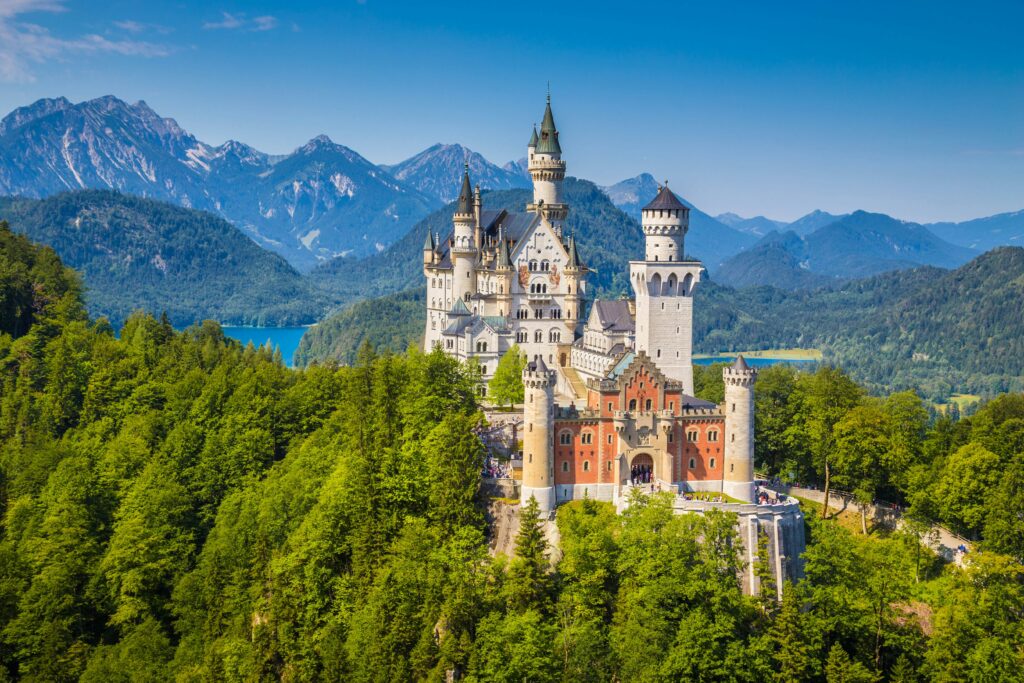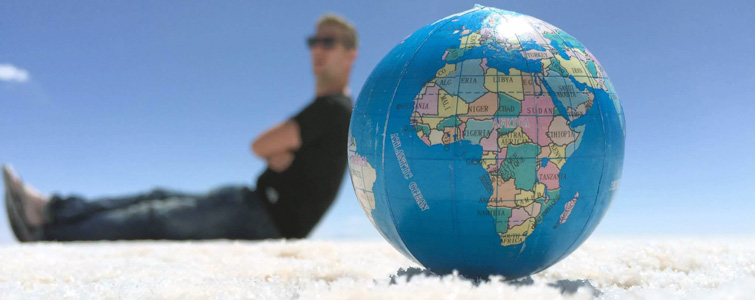
Germany, a country renowned for its rich history, cultural diversity, and economic prowess, is made up of 16 federal states known as Bundesländer. Each state has its own unique charm, from bustling urban centers to serene countryside, making Germany a mosaic of different cultures and traditions. Understanding the structure and significance of these states provides a deeper appreciation of Germany’s complexity and regional diversity.
Germany’s federal structure is a fascinating tapestry woven from its historical evolution and regional identities. Each Bundesland, or federal state, contributes to the nation’s identity, offering distinct traditions, dialects, cuisines, and cultural practices. This intricate framework not only shapes the political landscape but also enhances the cultural richness of the country.
Historically, the division into states has roots in the Holy Roman Empire and subsequent German Confederations, where various duchies, kingdoms, and principalities maintained a degree of autonomy. Today, these states function under a federal system, each with its own government, constitution, and capital. This article delves into the specifics of each state, highlighting their unique features and contributions to Germany’s national tapestry.
A Detailed Look at the Bundesländer
Baden-Württemberg
Located in the southwest, Baden-Württemberg is known for its economic strength and innovation, housing companies like Daimler and Bosch. Stuttgart, the capital, is a hub of automotive industry and engineering excellence. The state is also famous for the Black Forest, charming villages, and a robust cultural scene. Historically, it has been a center of learning and research, with the University of Heidelberg being one of the oldest universities in Europe.
Bavaria (Bayern)
Bavaria, Germany’s largest state, is synonymous with Oktoberfest, Lederhosen, and Dirndls. Munich, the state capital, is a vibrant city blending modernity with tradition. Bavaria’s stunning landscapes, including the Bavarian Alps and picturesque lakes, attract millions of tourists annually. Traditional Bavarian outfits, such as Lederhosen for men and traditional Dirndl dress for women, are iconic symbols of Bavarian culture, especially during festivals like Oktoberfest. These outfits, often intricately designed, reflect the state’s rich heritage and pride in its traditions.
Berlin
As the capital city and a state, Berlin stands as a symbol of Germany’s reunification. Known for its historical sites, diverse culture, and vibrant nightlife, Berlin is a city that never sleeps. Landmarks such as the Brandenburg Gate, the Berlin Wall, and numerous museums tell the story of its tumultuous past and dynamic present. Berlin is also a melting pot of cultures, offering a diverse culinary scene and numerous cultural festivals celebrating global traditions.
Brandenburg
Encircling Berlin, Brandenburg is characterized by its natural beauty and historic towns. Potsdam, the capital, is renowned for its palaces and gardens, including the famous Sanssouci Palace. The state’s vast forests, lakes, and rivers offer a tranquil escape from urban life. Historically, Brandenburg was a significant region in the Kingdom of Prussia, contributing to its military and political power.
Bremen
Bremen, a small state in northwestern Germany, consists of two cities: Bremen and Bremerhaven. The state boasts a rich maritime history, with Bremen’s old town featuring UNESCO World Heritage sites and Bremerhaven being a major port and maritime museum hub. The Bremen Town Musicians, a famous Brothers Grimm fairy tale, is also associated with the state, adding to its cultural heritage.
Hamburg
Another city-state, Hamburg is Germany’s second-largest city and a major port. Known for its maritime heritage, the Elbphilharmonie concert hall, and the bustling Reeperbahn nightlife district, Hamburg is a dynamic and cosmopolitan city. The city’s port, one of the largest in Europe, has been crucial to its economic development and cultural exchange.
Hesse (Hessen)
Hesse, with its capital Wiesbaden and financial hub Frankfurt, is a state of contrasts. Frankfurt is a global financial center, home to the European Central Bank, while the rest of Hesse features picturesque towns, vineyards, and historic castles. The state is also known for its spa towns, such as Wiesbaden and Bad Homburg, which have been popular since Roman times.
Lower Saxony (Niedersachsen)
Lower Saxony, located in northwestern Germany, is known for its diverse landscapes ranging from the North Sea coastline to the Harz Mountains. Hanover, the capital, is a major trade fair city, and the state’s cultural heritage includes the cities of Göttingen and Wolfsburg. The state is also famous for its agricultural products, particularly the renowned Hannover Fair.
Mecklenburg-Vorpommern
This northeastern state is celebrated for its stunning Baltic Sea coastline, numerous islands, and serene countryside. The capital, Schwerin, is famous for its fairytale castle, while Rostock and Stralsund offer rich maritime history and architecture. Mecklenburg-Vorpommern is also known for its nature reserves and national parks, making it a paradise for outdoor enthusiasts.
North Rhine-Westphalia (Nordrhein-Westfalen)
Germany’s most populous state, North Rhine-Westphalia, is an industrial powerhouse with cities like Cologne, Düsseldorf, and Dortmund. The state is known for its cultural diversity, historical sites, and economic significance. The Cologne Cathedral, a UNESCO World Heritage site, is a notable landmark, and the state also has a rich tradition of coal and steel production.
Rhineland-Palatinate (Rheinland-Pfalz)
Rhineland-Palatinate, famous for its wine production, is home to the scenic Rhine and Moselle rivers. Mainz, the capital, is known for its historic architecture and vibrant wine festivals. The state also boasts charming towns like Trier and Koblenz, which have rich Roman histories and are key locations for Germany’s wine industry.
Saarland
Saarland, a small state on the French border, is known for its French-influenced culture and cuisine. Saarbrücken, the capital, is a vibrant city with a rich industrial history. The state’s picturesque landscapes and historic sites add to its charm. Saarland’s cuisine reflects its proximity to France, with dishes like Lyoner sausage and Dibbelabbes being local favorites.
Saxony (Sachsen)
Saxony, in eastern Germany, is renowned for its cultural heritage and historical significance. Dresden, the capital, is known for its baroque architecture, while Leipzig is famous for its musical legacy and vibrant arts scene. The state is also known for its porcelain production in Meissen and has a long history of craftsmanship and trade.
Saxony-Anhalt (Sachsen-Anhalt)
Saxony-Anhalt, with its rich history and cultural landmarks, includes cities like Magdeburg, the capital, and Halle. The state is home to numerous UNESCO World Heritage sites, including the Bauhaus buildings in Dessau and the Luther Memorials in Eisleben and Wittenberg. The state’s historical significance is highlighted by its association with Martin Luther and the Protestant Reformation.
Schleswig-Holstein
Schleswig-Holstein, Germany’s northernmost state, is characterized by its maritime culture and scenic landscapes. Kiel, the capital, is a major port city, while Lübeck is known for its medieval old town and marzipan. The state also boasts beautiful beaches along the North and Baltic Seas, making it a popular destination for water sports and relaxation.
Thuringia (Thüringen)
Thuringia, located in central Germany, is often called the “Green Heart of Germany” due to its extensive forests. Erfurt, the capital, boasts well-preserved medieval architecture, while Weimar is famous for its association with Goethe and Schiller. Thuringia is also known for its traditional Thuringian sausage and its significant role in German cultural and intellectual history.
In Summary
Germany’s 16 states, each with its unique identity and charm, collectively contribute to the country’s rich cultural and historical tapestry. From the bustling streets of Berlin to the tranquil shores of Mecklenburg-Vorpommern, each Bundesland offers a glimpse into a different facet of Germany.
Understanding the Bundesländer not only enhances our appreciation of Germany’s diversity but also underscores the importance of regional identities in shaping the nation’s character. Whether you’re exploring the urban landscapes, indulging in traditional German cuisine, or donning a Dirndl at Oktoberfest, Germany’s states offer endless opportunities for discovery and enjoyment.
Germany’s federal structure is a testament to its historical evolution and cultural diversity. Each state, with its unique traditions and contributions, adds to the rich mosaic that is Germany. As you journey through this fascinating country, you’ll find that every Bundesland has a story to tell and a unique experience to offer.
Remember, never travel without travel insurance! And never overpay for travel insurance!
I use HeyMondo. You get INSTANT quotes. Super cheap, they actually pay out, AND they cover almost everywhere, where most insurance companies don't (even places like Central African Republic etc!). You can sign-up here. PS You even get 5% off if you use MY LINK! You can even sign up if you're already overseas and traveling, pretty cool.
Also, if you want to start a blog...I CAN HELP YOU!
Also, if you want to start a blog, and start to change your life, I'd love to help you! Email me on johnny@onestep4ward.com. In the meantime, check out my super easy blog post on how to start a travel blog in under 30 minutes, here! And if you just want to get cracking, use BlueHost at a discount, through me.
Also, (if you're like me, and awful with tech-stuff) email me and my team can get a blog up and running for you, designed and everything, for $699 - email johnny@onestep4ward.com to get started.
Do you work remotely? Are you a digital nomad/blogger etc? You need to be insured too.
I use SafetyWing for my digital nomad insurance. It covers me while I live overseas. It's just $10 a week, and it's amazing! No upfront fees, you just pay week by week, and you can sign up just for a week if you want, then switch it off and on whenever. You can read my review here, and you can sign-up here!













 As you know, blogging changed my life. I left Ireland broke, with no plan, with just a one-way ticket to Thailand and no money. Since then, I started a blog, then a digital media company, I’ve made more than $1,500,000 USD, bought 4 properties and visited (almost) every country in the world. And I did it all from my laptop as I travel the world and live my dream.
As you know, blogging changed my life. I left Ireland broke, with no plan, with just a one-way ticket to Thailand and no money. Since then, I started a blog, then a digital media company, I’ve made more than $1,500,000 USD, bought 4 properties and visited (almost) every country in the world. And I did it all from my laptop as I travel the world and live my dream.